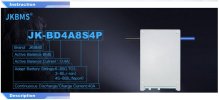GPak
Well-Known Member
@EricSan , Lately, I mostly use 4S/184Wh LTO Battery which works flawlessly, never had any issues with 7S/322Wh either, but I am thinking to reconfigure it to 6S/276Wh with the newest high efficient compact size auto back/boost charger and without any converters, for a 12V system, in a much smaller box.
The temperature outside isn't that hot yet, I wouldn't consider it hot until I see 95°F consistently.
On Ecoflow,
I don't think it's a shorted cell that will cause the PS to die completely and create a lot of smoke and smell.
The problem is somewhere else.
Which output? AC or DC, at what rate?
Does it really discharge PS?
Can you re-charge it back?
I believe Ecoflow has an internal fan and overheat protection, so at worst it would shut down due to heat, and resume working as it cools down.
Is it still under warranty? I would try ecoflow support.
The temperature outside isn't that hot yet, I wouldn't consider it hot until I see 95°F consistently.
On Ecoflow,
I don't think it's a shorted cell that will cause the PS to die completely and create a lot of smoke and smell.
The problem is somewhere else.
Which output? AC or DC, at what rate?
Does it really discharge PS?
Can you re-charge it back?
I believe Ecoflow has an internal fan and overheat protection, so at worst it would shut down due to heat, and resume working as it cools down.
Is it still under warranty? I would try ecoflow support.
Last edited:

